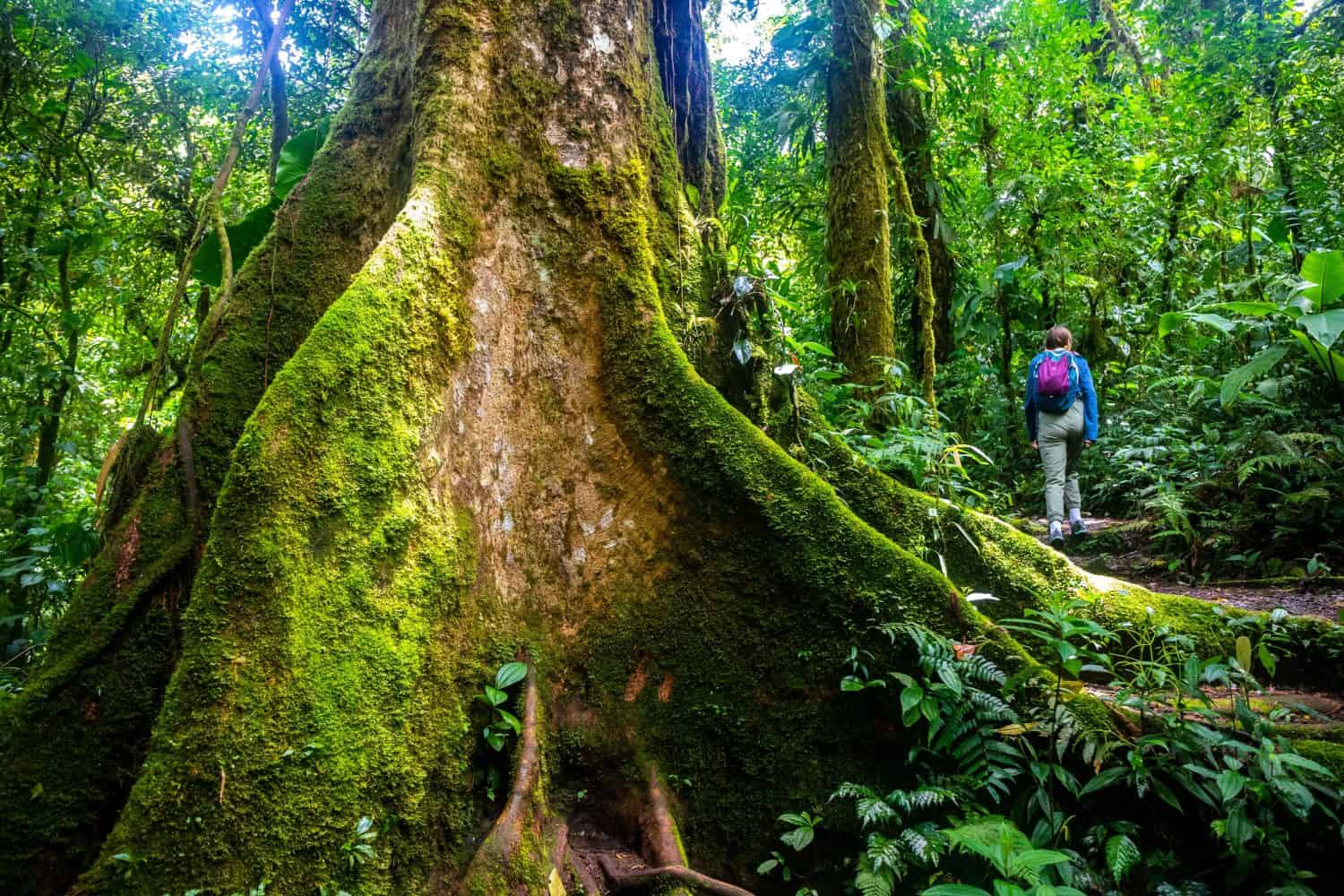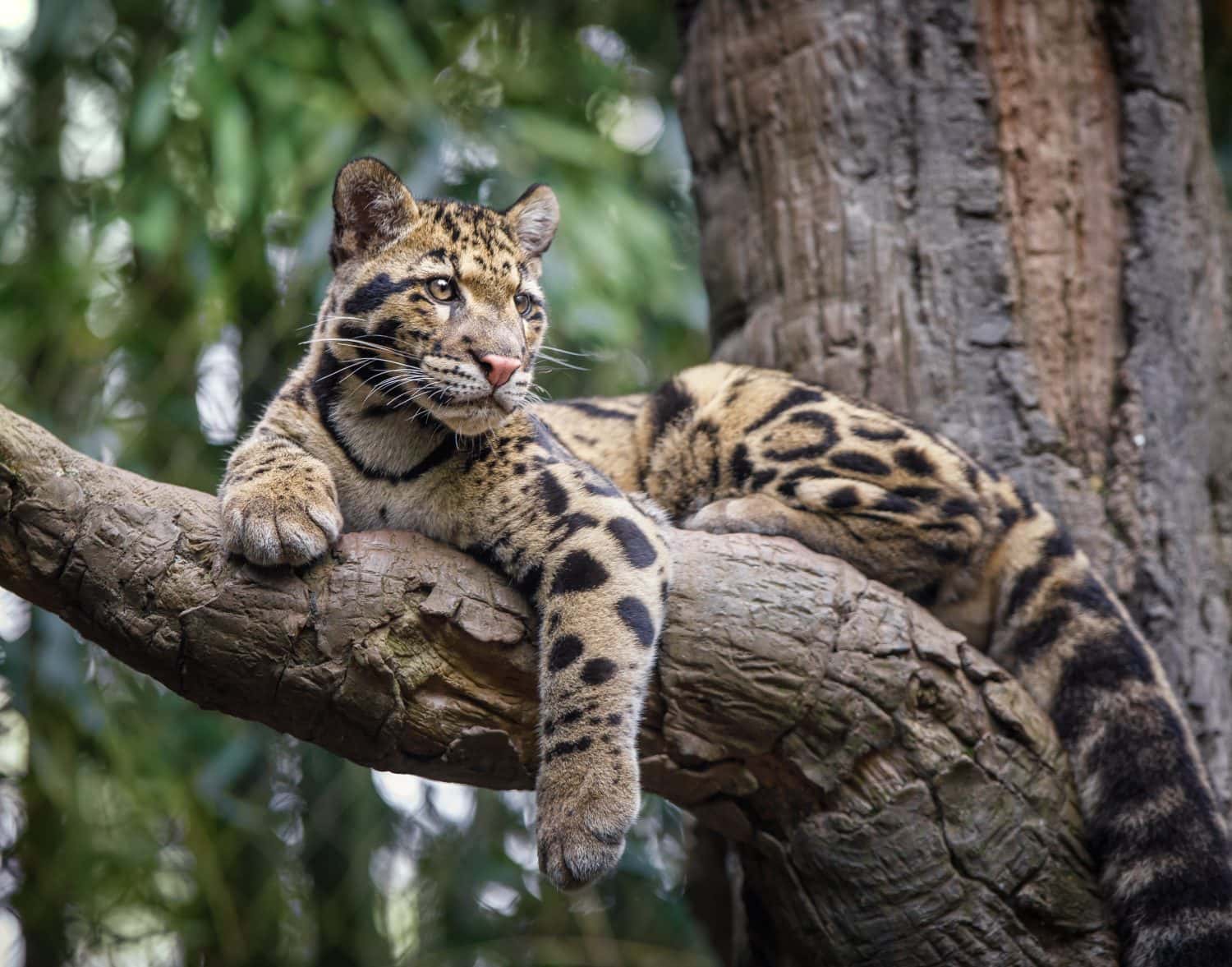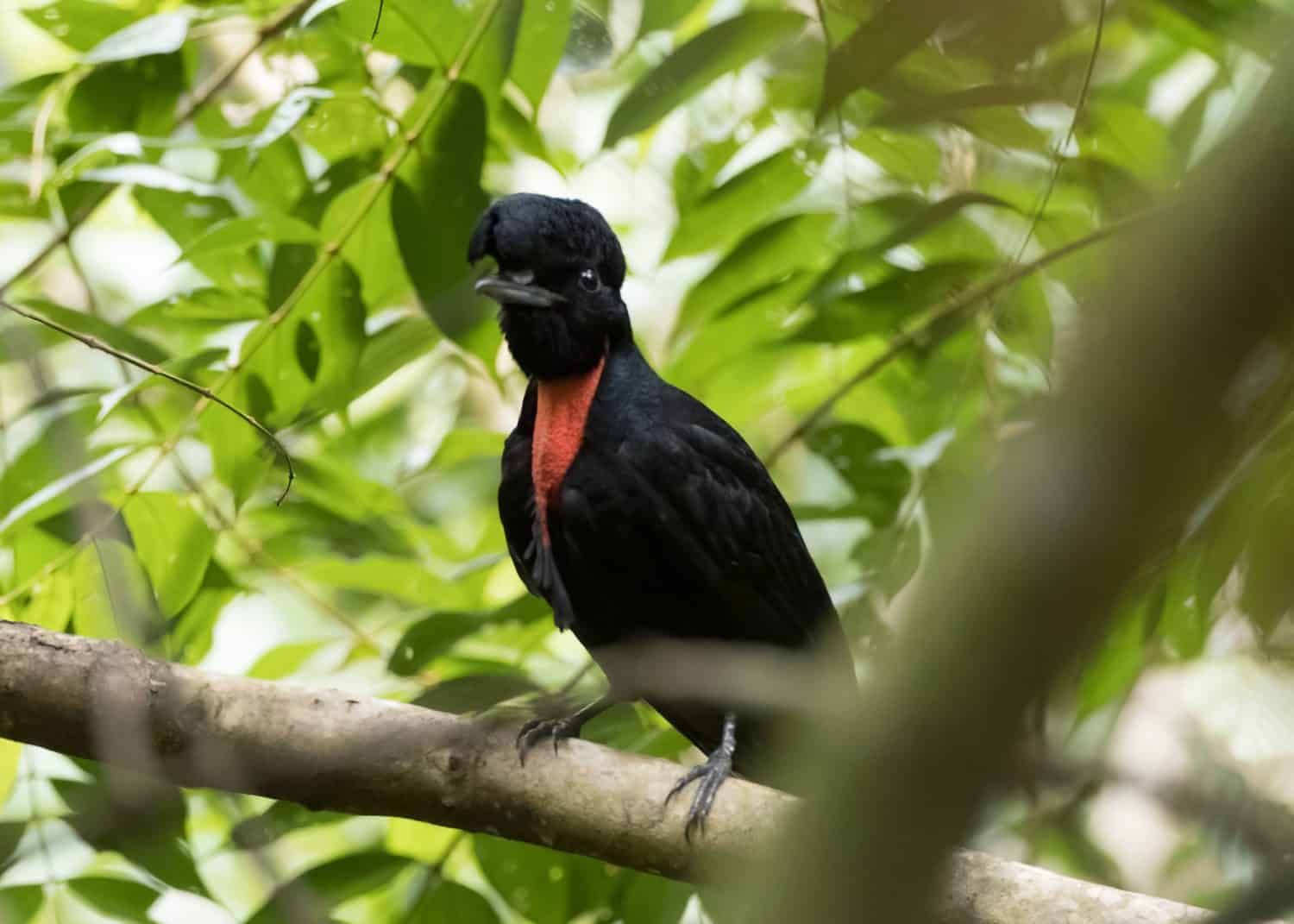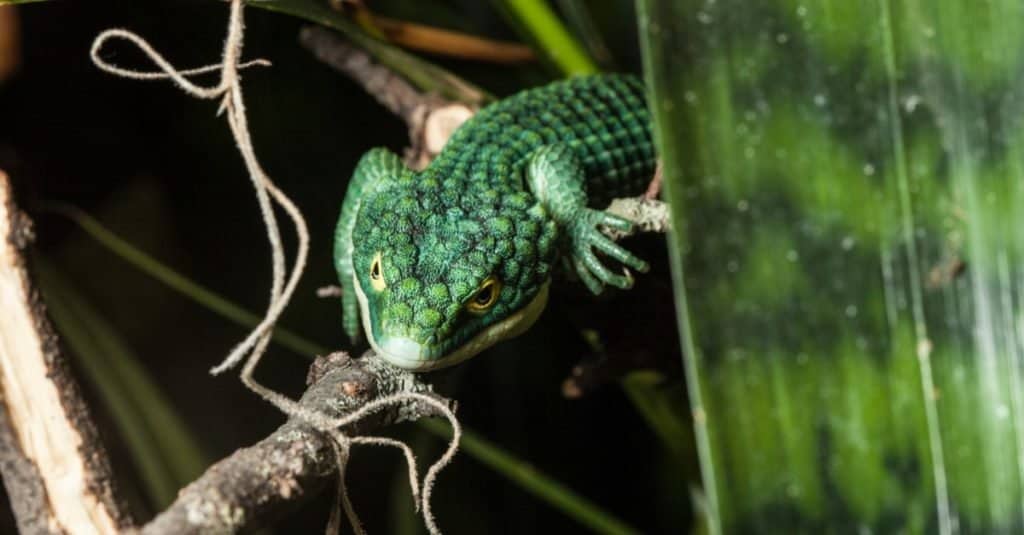Cloud forests sound like a setting from a fantasy novel, but they are a very real and vital part of the Earth’s biology. You may also see them called water forests, primas forests, and tropical montane forests. So, what is the cloud forest, and which animals live there? Let’s take a closer look at one of the most mysterious and elusive places on our planet.
What Is a Cloud Forest?
Cloud forests are evergreen forests that usually occur at altitudes of between around 3,250 feet and 8,200 feet. They are characterized by very high moisture levels (approaching 100 percent in some areas), giving them a misty, cloudy appearance. The seasonal, low-level cloud is usually formed at the canopy level. Typically, the trees in these forests are shorter, with gnarled trunks and branches, making them look even more eerie. Precipitation can reach 385 inches a year!
How Are Cloud Forests Formed?

Cloud forests typically have gnarled trees and saturated mosses.
©Jakub Maculewicz/Shutterstock.com
The Q’eqchi’ Maya language sums up the formation of these forests as ‘naxchap li choq’ which means ‘the forest catches the clouds’.
The scientific term for this is lateral cloud filtration. It starts with air currents moving inland from the sea, and as they cool, they form clouds as they meet the high mountain slopes. As the clouds filter through the tree crowns, moisture forms on the leaves/needles coalesces into larger drops, and finally drips to the ground, falling as a type of rain. It also saturates the mosses on the tree branches. This is how the forest plants obtain their moisture.
The soil in these forests has high water content, receives very little sunlight, and is very acidic, with humus and peat-forming in the upper soil layer.
Where Are They Found?
There are examples of water forests in many parts of the world. For example, the hemlocks and Sitka spruces along Cape Lookout Point on the Oregon coast are drenched in clouds. If you walk under them on a breezy day, you will get soaked – but it is not raining! However, when you see cloud forests being discussed, it is usually tropical cloud forests.
Tropical cloud forests are only found in mountainous areas. They also only occur in the tropics, on either side of the equator. In total, 12 countries have montane cloud forest sites, but most are found in Venezuela, Mexico, Ecuador, and Colombia. There are others in southern Brazil, Costa Rica, northern Australia, South India, Vietnam, Cambodia and across Indonesia.
Sadly, these special forests are under threat. In the 1970s, 11 percent of global forests were cloud forests, but now it is only one percent. Global warming is forcing the forest vegetation to grow at higher, cooler altitudes, but here, there is less moisture, and the plants and animals are struggling. Also, deforestation is clearing the lower slopes. In the St Helena Peaks National Park alone, the water forest has reduced from between 130-1100 hectares (estimated from historical records) to just 16 hectares in 2008. Efforts are underway to protect the remaining forest which is important for the supply of water for the island’s plants, animals, and humans.
Cloud Forests vs Rainforests
There are a few crucial factors that distinguish cloud forests from rainforests. The first is location. Cloud forests are always located in mountainous regions. Also, they are cooler, have less sunlight, and more acidic soil. The trees are shorter and denser and a labyrinthine of mass vegetation is created. Rainforests, on the other hand, have regular layered canopies with trees that can reach 200 feet. Both forests have rivers, but in rainforests, they are large and slow-flowing with silt beds. Cloud forest rivers have rocky beds and are shallow and fast-flowing. The two forests also have very different wildlife.
Why Are They So Important?
From a biodiversity perspective, water forests are crucial. Many of them contain plants and animals that are not found anywhere else on earth – this is called endemism.
Also, they are highly effective ‘water factories’. For example, 40 percent of the water used by Tegucigalpa, the capital city of Honduras, is supplied by a cloud forest.
What Animals Live in Cloud Forests?
Many conservationists believe that cloud forests should be the world’s greatest conservation priority. Here are a few examples of the animals that live there.
Red-eyed Stream Tree Frog

Red-eyed stream tree frogs are endangered.
©Milan Zygmunt/Shutterstock.com
These frogs are a critically endangered species of the cloud forests of Costa Rica and Panama. They thrive in cool, moist environments, but their habitats are under threat.
Clouded Leopards

Clouded leopards are an ancient cat species.
©jdross75/Shutterstock.com
As an ancient cat species, clouded leopards have been living in water forests for many years. They have large paws with specialized footpads for gripping branches. They hunt primates, small deer, and wild boars.
Bare-necked Umbrellabird

The distinctive bare-necked umbrella bird lives in cloud forests.
©Gunilla S-Granfalk/Shutterstock.com
These birds are found in the Talamancan montane forests of Costa Rica and Panama. They eat mainly fruit and have a very distinctive appearance. They are a native species of the Monteverde Forest Preserve.
Mexican Alligator Lizard

Mexican
Alligator
Lizards live in cloud forests.
©K Hanley CHDPhoto/Shutterstock.com
The Mexican alligator lizard lives about 130 feet in the air in Mexico’s cloud forests. They are a vibrant, bright green and eat insects that crunch with their sharp teeth.
The photo featured at the top of this post is © alvarobueno/Shutterstock.com
Thank you for reading! Have some feedback for us? Contact the AZ Animals editorial team.






